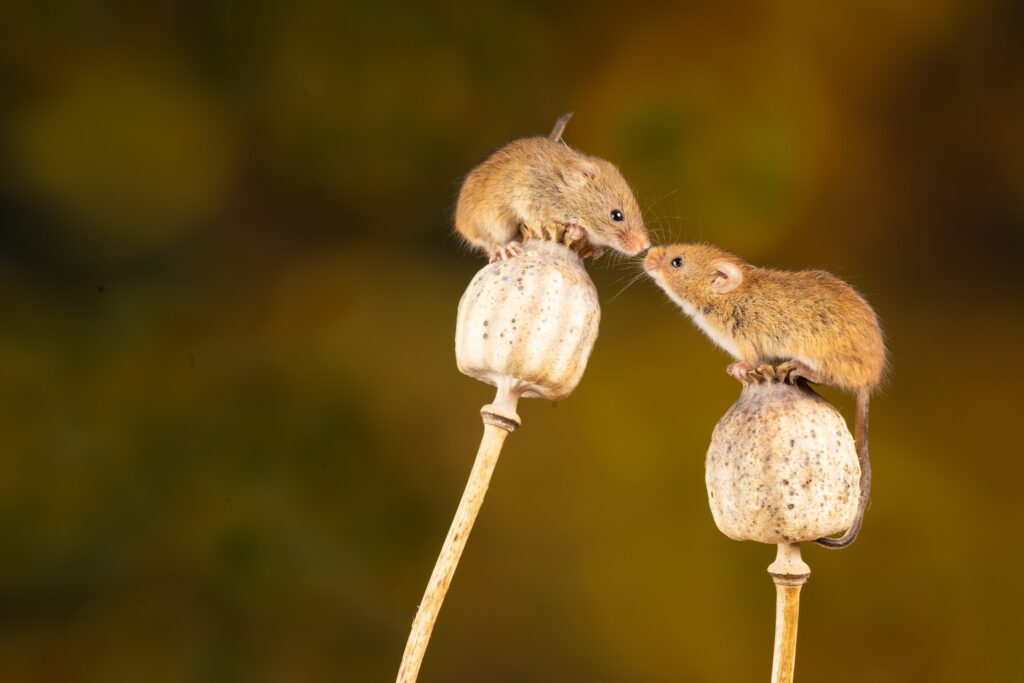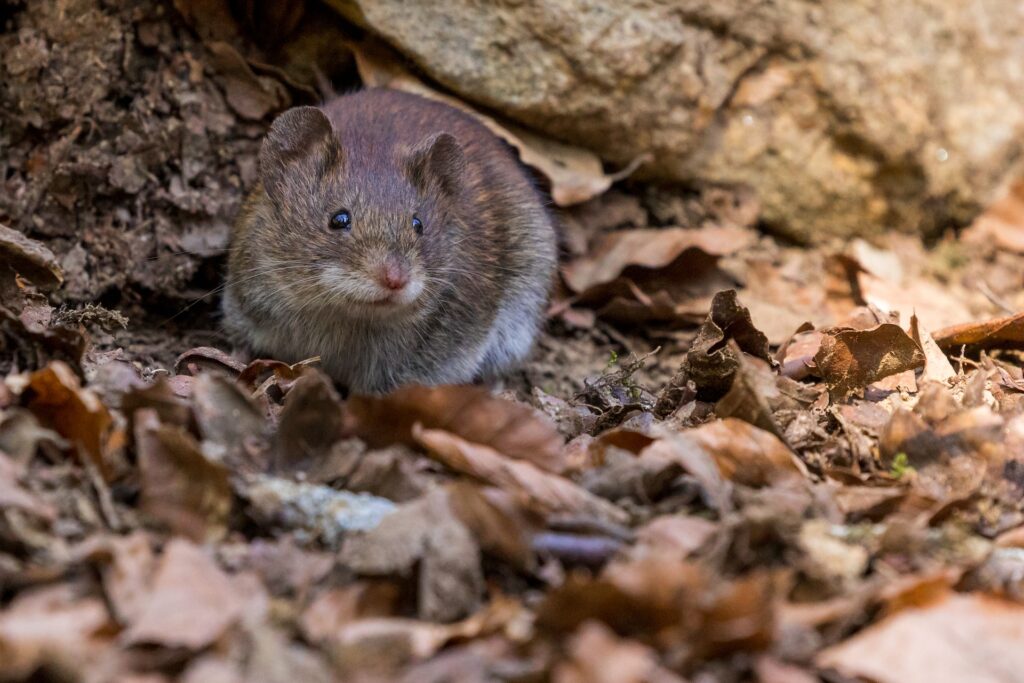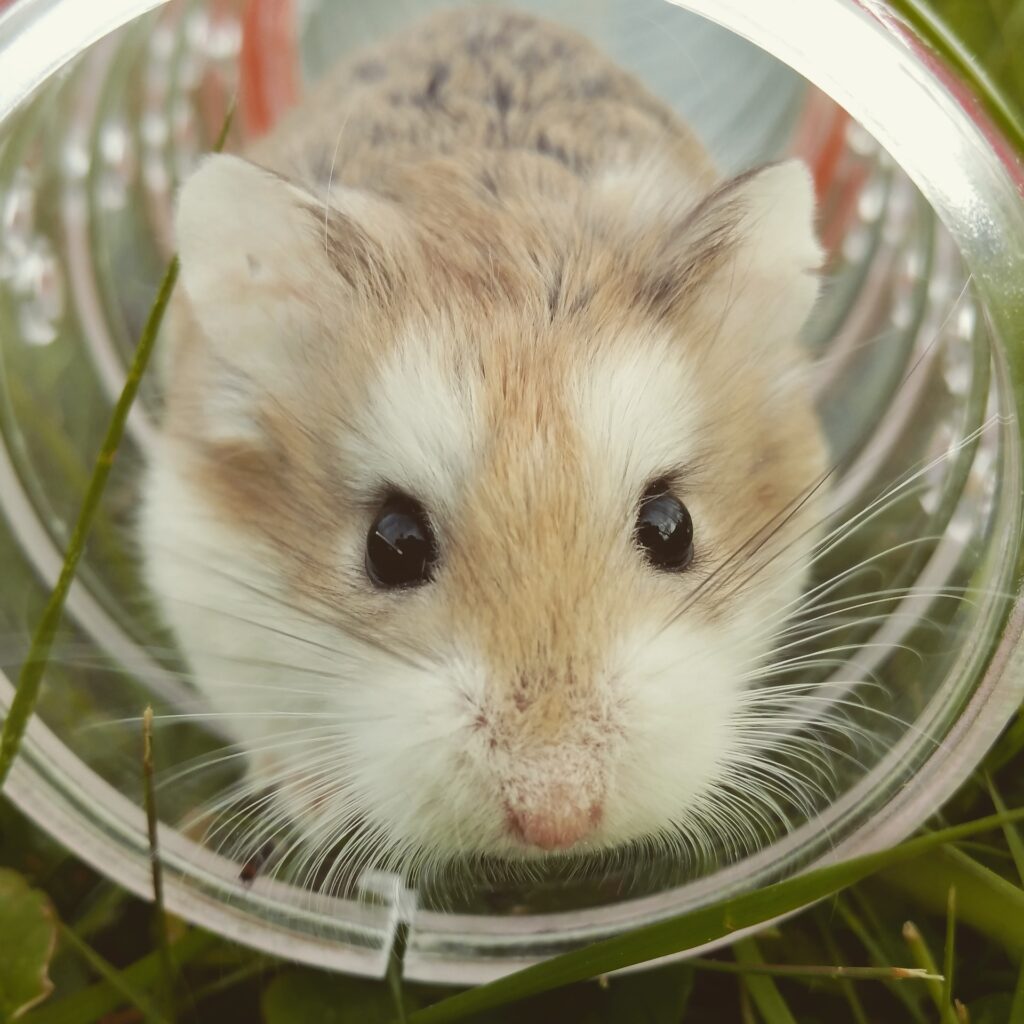Table of Contents
Nature is filled with an abundance of diverse and intriguing creatures, each playing a unique role in maintaining the delicate balance of our ecosystems. Among these remarkable creatures is the deer mouse (Peromyscus maniculatus), a small rodent that resides in various habitats throughout North America.
Despite its seemingly unassuming appearance, the deer mouse possesses remarkable adaptations and ecological significance, making it a captivating subject for study and appreciation. In this essay, we will explore the world of deer mice, shedding light on their physical characteristics, habitat preferences, behaviors, and ecological importance.
Physical Characteristics
Deer mice are small rodents, typically measuring around 7 to 10 centimeters in length, with an additional 7 to 10 centimeters for their long, slender tail. Their fur exhibits a range of colors, including shades of gray, brown, and red, with a distinct white underbelly. These color variations often serve as camouflage, enabling them to blend effectively with their surroundings. Their large, prominent eyes provide them with excellent night vision, a crucial adaptation for their nocturnal lifestyle. In addition, deer mice possess sharp incisors, which they use for gnawing on seeds and other food sources.
Habitat Preferences
The adaptability of deer mice allows them to thrive in a wide range of environments, from forests and grasslands to deserts and mountainous regions. They are particularly well-suited for habitats with ample vegetation cover, which offers protection from predators and access to food sources. Deer mice construct nests in hidden locations, such as tree cavities, underground burrows, or abandoned animal dens. These nests provide a safe haven for resting, breeding, and rearing their young.
Behaviors and Diet
Deer mice exhibit a variety of fascinating behaviors that contribute to their survival. They are primarily nocturnal, meaning they are most active during the night. This behavior helps them avoid diurnal predators and allows them to exploit resources more efficiently. Deer mice are known for their remarkable agility and swift movements, which enable them to navigate through complex environments with ease.
As omnivores, deer mice have a diverse diet. They consume a wide range of plant matter, including seeds, fruits, and leaves, as well as insects, spiders, and small invertebrates. Their ability to consume a variety of food sources allows them to adapt to changing environmental conditions and ensures their survival even in resource-limited habitats.
Ecological Importance
Deer mice play a significant role in maintaining ecosystem balance. They act as important seed dispersers, aiding in the distribution of plant species throughout their habitats. When deer mice consume fruits or seeds, they often store excess food in caches, which they may not retrieve. These hidden reserves contribute to the dispersal and germination of seeds, promoting the growth of diverse plant communities.
Furthermore, deer mice serve as a vital link in the food chain, being both predator and prey. They are preyed upon by a wide range of predators, including snakes, owls, foxes, and weasels. By regulating the population of deer mice, these predators help maintain the stability of the ecosystem.
Deer mice have developed several adaptations and survival strategies that contribute to their success in various environments. One of their notable adaptations is their ability to enter a state of torpor during periods of food scarcity or harsh weather conditions. Torpor is a state of reduced metabolic activity, similar to hibernation, where their body temperature and energy requirements decrease, allowing them to conserve energy until conditions improve.
Another remarkable adaptation of deer mice is their resistance to certain diseases, such as the hantavirus. While they can carry and transmit the hantavirus to humans, they themselves are relatively unaffected by its harmful effects. This resistance is due to their genetic makeup, which has evolved over time to combat the pathogens present in their environment.
Reproduction and Social Structure
Deer mice are known for their rapid reproduction rate, allowing them to maintain their population levels even in the face of predation and other environmental challenges. They have a short gestation period of around three weeks, and a female deer mouse can produce multiple litters per year, typically ranging from two to eight pups per litter. The offspring are born hairless and blind but develop rapidly, becoming independent within a few weeks.
Deer mice exhibit a relatively solitary lifestyle, with individuals primarily occupying and defending their own territories. However, they are not entirely antisocial and may form small family groups or loose colonies in certain circumstances. These social structures allow for cooperation in tasks such as nest building and raising young, enhancing their chances of survival.
Research and Conservation
The study of deer mice has garnered significant scientific interest due to their adaptability, ecological importance, and their role as hosts for diseases such as the hantavirus. Researchers investigate their behaviors, physiological adaptations, and genetic makeup to gain insights into various areas of biology, including evolutionary biology, immunology, and disease transmission dynamics.
Conservation efforts aimed at protecting the habitats where deer mice reside indirectly benefit their populations. Preserving forests, grasslands, and other natural environments ensures the availability of suitable habitats, food sources, and resources necessary for their survival. Furthermore, understanding the ecological role of deer mice helps in developing effective management strategies for controlling diseases transmitted by rodents.
Future Research and Implications
While significant research has been conducted on deer mice, there are still areas that warrant further exploration. Understanding the genetic basis of their disease resistance can provide valuable insights into the development of treatments for human diseases. Investigating their physiological adaptations, such as torpor and metabolic regulation, may offer novel approaches for understanding human health conditions such as obesity and metabolic disorders.
Furthermore, with the increasing threat of climate change and habitat loss, it is crucial to continue studying how deer mice populations are being affected. Climate change can alter their habitats, disrupt their food sources, and affect their reproductive patterns. By monitoring these changes and their implications on deer mice, we can gain a better understanding of the broader impacts on ecosystems and potentially develop strategies for conservation and management.
Appreciation and Coexistence
The deer mouse serves as a reminder that even the smallest and seemingly insignificant organisms play a vital role in the functioning of ecosystems. By appreciating their contributions and understanding their ecological significance, we can foster a sense of respect and stewardship for all living creatures. This appreciation extends to finding ways to coexist with wildlife, including implementing measures to prevent human-wildlife conflicts and minimize the spread of diseases without jeopardizing their populations or compromising ecosystem integrity.
Conclusion
The deer mouse is a fascinating and integral part of our natural world. Its physical characteristics, habitat preferences, behaviors, and ecological importance make it a remarkable creature worthy of our attention and study. By understanding and appreciating the role that deer mice play in the ecosystem, we gain a deeper appreciation for the intricate web of life and the importance of preserving biodiversity for the well-being of our planet.


